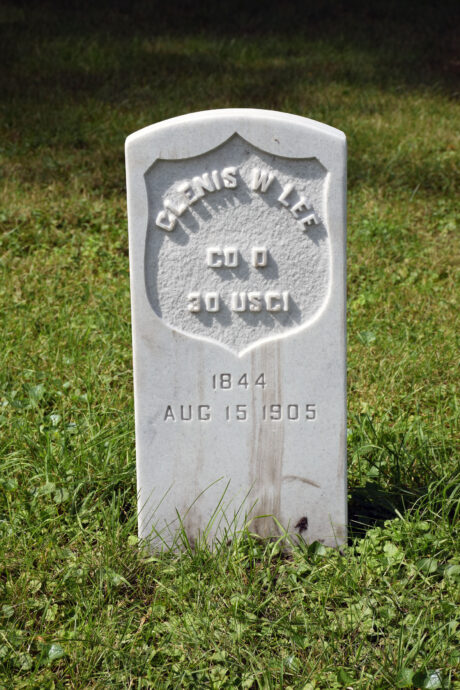from the series Tales from Pioneers and Soldiers Memorial Cemetery, No. 221
By SUE HUNTER WEIR

In August 1905, within a matter of days, Minneapolis’s African-American community lost two of its best-known and well-respected members: Emanuel Hamilton and Clenis Washington Lee.
Emanuel Hamilton, affectionately known as “Ham”, died on August 12, 1905. Three days earlier, he became ill at work and rushed to the City Hospital. The city was in the middle of a heat wave and it was initially thought that he was suffering from heat exhaustion, but doctors later determined that he had suffered a stroke. He remained hospitalized, semi-conscious and unable to speak, until he died.
Hamilton was born in South Carolina in 1851, and although there is no record of it, he was most likely enslaved when he was a child. When Hamilton arrived in Minneapolis in 1870, there were only 13,000 people living in the city. He set up shop working as a barber in the Cataract Hotel, and the Minneapolis Tribune described him as “one of the most popular barbers in the city.” He was a liberal Republican, and although he never sought office himself, he was “widely listened to by the shrewdest of politicians.” Hamilton was also a member of the Masons and the Knights of Pythias. Newspapers described him as a widower but, although his name appeared in several censuses over the years, there was no mention of a wife.
Hamilton was best known for his passion for baseball. He attended games at the ballfield behind the downtown West Hotel. His passion for the game was so intense that he was described by the Minneapolis Times as “…one of the characters of the city in the seventies and eighties.” As he aged, however, he was forced “to seek quieter pleasures.” Although he moved his business several times over the years, he stayed close to downtown and continued working up until the time of his death.
Clenis Washington Lee died four days after Emanuel Hamilton, and like Hamilton, he was a barber. Lee served in Company D of the 30th U.S. Colored Infantry. He enlisted on September 4, 1864, and was discharged for disability on June 17, 1865. After the war he lived in Chicago but later moved to Madison, Wisconsin, where he met and married Fanny Blackwell. The couple lived in Wisconsin until 1882, when they moved with their six children to Minneapolis. They had two more children after the move.
Lee died from gallstones on August 16, 1905. Seventeen years later, Fanny Lee applied for a widow’s pension. Her 138-page file details the Department of Interior’s investigation into her claim. They wanted proof that the man she married, Clenis Washington Lee, was the same man who had enlisted as Washington Lee. She recounted that he had kept relics from the war and often talked of his time in the army, but the documentation that she once had, his discharge papers and their wedding certificate, were destroyed in a fire some years earlier, and her knowledge of the details of his service was limited.
Investigators also contacted several men who served in Company D. None of the men they interviewed, most of them in their late 70s or 80s, could recognize Lee from the only photo of him that existed, which was likely taken decades after his service. Mrs. Lee’s application was rejected because she was not able to prove definitively that her husband, Clenis W. Lee, and Washington Lee were the same man.
Most of what is known about Lee comes from the deposition provided by his wife. She said he was formerly enslaved and that his mother had been “taken away from him” when he was five years old. She did not know the names of his parents or siblings.
She did not know her own birth date since she, too, had been enslaved. She thought that she was about 70 years old when she filed her claim but she was undoubtedly older, since her younger sister was 73. After her husband died and she was no longer able to work, Mrs. Lee moved to Chicago to live with one of their daughters.
Emanuel Hamilton is buried in Lot 6, Block 4 in an unmarked grave. Clenis W. Lee is buried in Lot 24, Block W, in the 24th grave from the north. The Department of Veteran Affairs has since acknowledged Lee’s service, and his grave now has a new military marker.
Sue Hunter Weir is chair of Friends of the Cemetery, an organization dedicated to preserving and maintaining Minneapolis Pioneers and Soldiers Memorial Cemetery. She has lived in Phillips for almost 50 years and loves living in such a historic community.









